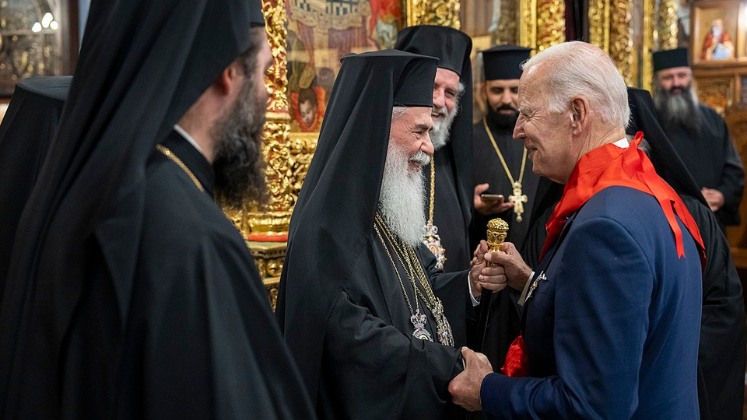What do we know about the spiritual roots of the armed resistance against British colonialism? For the youth movements of Bengal, Sri Aurobindo Ghosh was a formative teacher behind their ideas of ‘spiritual violence’, ‘white demons’, and the mother land. In this blog, Sourajit Ghosh tells us more about these secret revolutionary societies.

I begin this piece with a short extract from the Jugantor Bengali periodical (1905), taken up from the work of Hugh B. Urban,
“Invoke the Mother Kali… the mother asks for sacrificial offerings. What does the mother want? A fowl or sheep or buffalo? No. She wants many white Asuras…The Feringhee empire draws to an end… Kali rises in the East”
The eternal Śakti, the symbolism of uncontrollable primordial consciousness, the patron mother goddess of Bengal is celebrated and worshipped for her act of slaying the demon Mahiṣāsura. The supreme feminine principle in all the forms it is worshipped such as Durga, Tārā, Kālī symbolises time and space (kāla), which is infinite, unstoppable and a force which has the capacity to engulf everything, setting the model of liberation of all life forms. In the 19th and 20th Century, the cult of mother goddess in Bengal and the undercurrents of secret revolutionary societies engaging in radical Tantric movements became a ‘nightmare’ for the British Imperial Empire setting on to the ‘crisis of the Raj’. Śakti (or Śakta) symbolisms became an inspiration for revolutionary movements in colonial Bengal. Sri Aurobindo Ghosh considered the mother land as the embodiment of the supreme Tantric Goddess Kali and his philosophical view was that the sons of Bengal must fight against the colonial oppressors to free their mother land from British atrocities. This transformed into a radical vision of armed conflict in Bengal’s resistance against the British imperial government. If we try to understand the spiritual side of the armed resistance in simple terms, the connection much lies with the ‘compassionate act’ of slaying of the demons (asuras) whose atrocities were making the world and its human beings suffer. In the Bengali faith, the supreme mother goddess not only brings the end of the suffering of the common people by slaying the oppressors — the demons — but also, for the demon itself. The ‘divine slaying’ liberates its soul from the earthly ties and illusions which are symbolised by the mother goddess, the supreme māyā.
The youth of Bengal in the colonial period subscribed to armed resistance in a more spiritual, sanctified way; the act of ‘spiritual violence’ by the armed revolutionaries was regarded as an act of liberation from the ‘white-demons’ who in a Bengal Religious Nationalist context attempted to abuse and undermine the dignity of the mother land. For portraying the sanctification of the ‘Nationalist‘ armed movements of the youth, we should look at the complex relationship between the political and spiritual philosophy of the sage and underground revolutionary, Sri Aurobindo Ghosh (1872-1950) in the light of rise of secret intellectual revolutionary societies in colonial Bengal.
The revolutionary sage Sri Aurobindo actively engaged in aggressive anti-imperial resistance from 1902-1910. Sri Aurobindo’s philosophy of ‘religious armed resistance’ became popular from 1905 partition of Bengal by Lord Curzon which due to fierce extremists was revoke after six years.
Bengalis, as followers of Śakti, subscribed to the ideas of sacrificing ‘white-demons’ — the British, in the context of colonial Bengal — to the feet of the mother goddess who liberates souls and helps people attain the cessation of suffering. The atrocities of the British over the Indian masses were viewed as a reflection of their own suffering which needed liberation from cycles of sins. Sri Aurobindo successfully made young freedom fighters of secret societies (Biplabi dals) such as Anushilan Samiti and Jugantor, believing in the vision of Swaraj which needed sacrifices for the mother land as the embodiment of the supreme feminine principle the ‘Adya Śakti’. In this context, Sri Aurobindo, who was an active advisor of Anushilan Samiti and Jugantor, formulated his version of full-freedom (Purna-Swaraj) from the Imperial British Government by way of armed conflict, bombing, killing and robbery of resources.
He understood the ‘political violence’ as a sanctified holy act of serving the divine Śakti by putting an end to evil forces. German philosophers such as Hegel and Nietzsche also inspired his violent anti-imperial movement. He re-spiritualised Nietzsche’s view of the super human and adaptation of the secular ‘God is Dead’ model, but rather emphasised a neo-Vedantin view of yugas and karma yoga, and transitional sources of power against British atrocities, paving the wider path for reformist-radicalism which the British Raj labelled as acts of terror.
Small units of revolutionary dals formed a broader network of groups carrying out Sri Aurobindo’s philosophy. One of these groups, the Anushilan Samiti, initially started as a society promoting art, culture, sports, national sentiments and spiritual values, but over time it transformed into a secret society nurturing freedom fighters to free the mother land from the British empire using extreme radical mannerisms, becoming involved in training and building movements of young revolutionaries to fight the British forces. The Anushilan Samiti had several regional chapters and units which later developed into spiritual centres fostering nationalistic views, termed akharas, such as Sakti Samiti, Swadeshi Samiti, Sanatan Samiti and Basanta Malti, all of which became critical epicentres of secret guerrilla strategies to push the British empire’s downfall. The name of the society was very much inspired by the literary work of Bankim Chandra Chattopadhay, Anushilan-Tatava and Anandamath who recorded the 18th Century Sanyasi rebellion against the British Raj.
German Philosophy, Śakti Tantras and Sri Aurobindo Ghosh
It was not only Hegel and Nietzsche who inspired Sri Aurobindo, but also Japan’s defeat of Russia in 1904, and the allied concept of godly king followed by the empire of Japan which connected the sage revolutionary religion with the struggle against the Imperial British empire. Sri Aurobindo was particularly motivated by the philosophy of Hegel to understand civil societies and alternative concepts of state (from particularism to universalism) which influenced both the German enlightenment and French Revolution.
The combination of symbolism of Śaktism with neo-Hindu Vedanta philosophy ensured the portrayal of the mother land as the goddess, with all the revolutionaries as her disciples fighting the demons. It was a part of political strategy to make this aggressive movement popular and mobilize the masses into a heroic sacrifice for the mother. This developed into a nationalistic vision of land’s the supreme feminine consciousness.
Today’s world
Why could the revival of such ideologies be concerning in contemporary times? The sanctification of nationalist revolutionary groups and their armed resistance against the British Raj deserves our attention. Such a violent yet highly intellectual movement was a need of the hour in our struggle for freedom, but speaking in a contemporary sense, such extreme thought systems combining religious communalism and an anti-west attitude are always vulnerable to be misused by political actors to manipulate the masses towards certain politics, for example, as seen in the case of the Orthodox Church’s support for Putin in the present Russia-Ukraine conflict. In times of war and hatred based on religion and communalism, scholars, politicians, and policy makers must ensure cooperation between nations and refrain from any such religious sanctification of war.
For further reading, please see Hugh B. Urban’s “Sacrificing White Goats to the Goddess: Tantra and Political Violence in Colonial India,” in Tantra Sex, Secrecy, Politics, and Power in the Study of Religion.






Excellent text! Very interesting to know how Sri Aurobindo was influenced by Hegel and Nietzsche phisolophy, and how he saw this ideas in a Vedanta way.